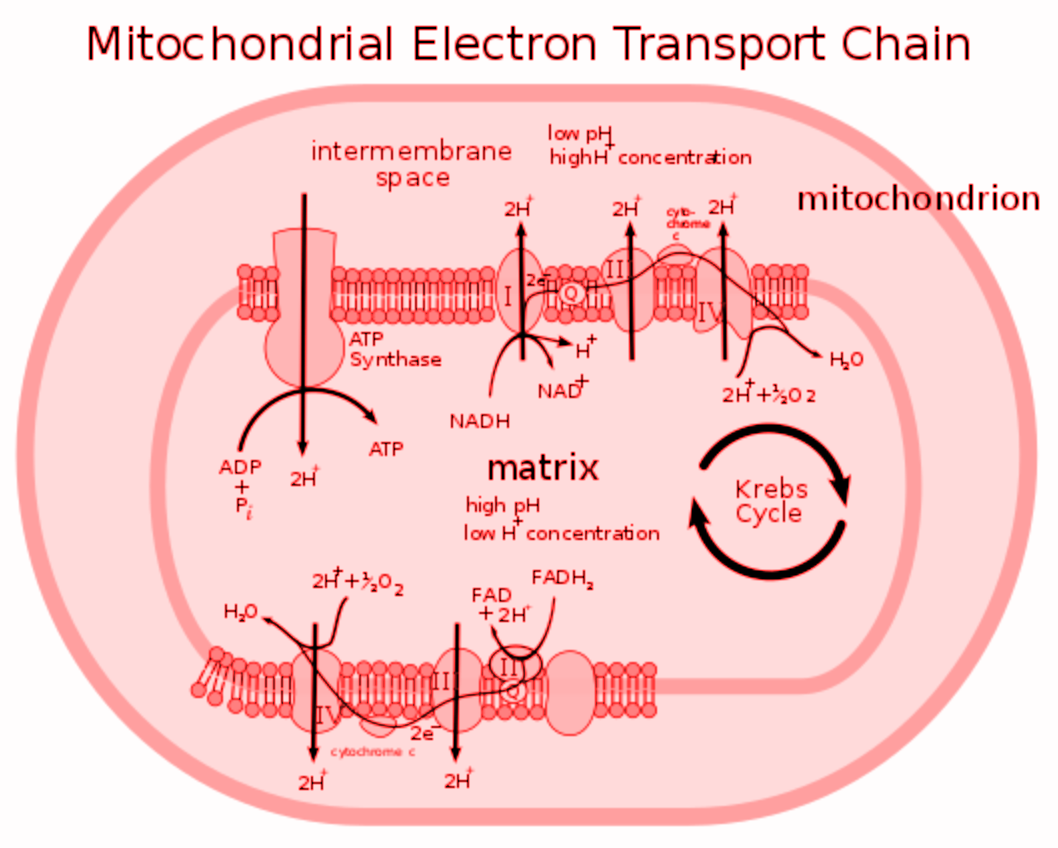
An enzyme absent in mitochondria ETS is
(a) FeS protease
(b) Glucose 6-phosphate dehydrogenase
(c) NADH dehydrogenase
(d) Cytochrome C oxidase
Answer
474k+ views
Hint: An enzyme absent in the ETS mitochondria is an enzyme that is involved in a parallel glycolysis metabolic pathway. This enzyme is an enzyme that is cytosolic. They are present in the enzyme group that catalyzes the removal of atoms of hydrogen. This deficiency of the enzyme is a genetic condition that occurs in males almost exclusively.
Complete step by step answer:
ETC in mitochondria is the final phase of cellular respiration. Here, each oxidative step releases a pair of hydrogen atoms that dissociate into $2{ H }^{ + }$ and $2{ e }^{ - }$.
Cytochromes, coenzymes, and other enzymes are composed of ETC. ETC is found in FeS protease, NADH dehydrogenase, and cytochrome c-oxidase.
There is no presence of glucose 6-phosphate dehydrogenase in ETC. It is involved in the pentose phosphate pathway where glucose 6-phosphate is a substrate.

A cytosolic enzyme that catalyzes the chemical reaction is glucose-6-phosphate dehydrogenase.
This enzyme is involved in the pentose phosphate pathway, a metabolic pathway that, by maintaining the coenzyme nicotinamide adenine dinucleotide phosphate (NADPH) level, supplies cells with reduced energy (such as erythrocytes).
So, the correct answer is, ‘Glucose 6-phosphate dehydrogenase’.
Note: Cell organelles that are involved in aerobic respiration are mitochondria. In the matrix of mitochondria, the Krebs cycle takes place and it generates decreased coenzymes that are oxidized by electron carriers of the Electron Transport System or ETC to generate Atp through oxidative phosphorylation. In eukaryotes, the ETS electron carriers are found in the inner mitochondrial membrane.
Deficiency of Glucose 6-phosphate dehydrogenase primarily affects red blood cells, which bring oxygen in the body from the lungs to tissues. It makes red blood cells break down prematurely in affected individuals. This red blood cell death is called hemolysis.
Complete step by step answer:
ETC in mitochondria is the final phase of cellular respiration. Here, each oxidative step releases a pair of hydrogen atoms that dissociate into $2{ H }^{ + }$ and $2{ e }^{ - }$.
Cytochromes, coenzymes, and other enzymes are composed of ETC. ETC is found in FeS protease, NADH dehydrogenase, and cytochrome c-oxidase.
There is no presence of glucose 6-phosphate dehydrogenase in ETC. It is involved in the pentose phosphate pathway where glucose 6-phosphate is a substrate.

A cytosolic enzyme that catalyzes the chemical reaction is glucose-6-phosphate dehydrogenase.
This enzyme is involved in the pentose phosphate pathway, a metabolic pathway that, by maintaining the coenzyme nicotinamide adenine dinucleotide phosphate (NADPH) level, supplies cells with reduced energy (such as erythrocytes).
So, the correct answer is, ‘Glucose 6-phosphate dehydrogenase’.
Note: Cell organelles that are involved in aerobic respiration are mitochondria. In the matrix of mitochondria, the Krebs cycle takes place and it generates decreased coenzymes that are oxidized by electron carriers of the Electron Transport System or ETC to generate Atp through oxidative phosphorylation. In eukaryotes, the ETS electron carriers are found in the inner mitochondrial membrane.
Deficiency of Glucose 6-phosphate dehydrogenase primarily affects red blood cells, which bring oxygen in the body from the lungs to tissues. It makes red blood cells break down prematurely in affected individuals. This red blood cell death is called hemolysis.
Recently Updated Pages
Master Class 11 Accountancy: Engaging Questions & Answers for Success

Express the following as a fraction and simplify a class 7 maths CBSE

The length and width of a rectangle are in ratio of class 7 maths CBSE

The ratio of the income to the expenditure of a family class 7 maths CBSE

How do you write 025 million in scientific notatio class 7 maths CBSE

How do you convert 295 meters per second to kilometers class 7 maths CBSE

Trending doubts
10 examples of friction in our daily life

One Metric ton is equal to kg A 10000 B 1000 C 100 class 11 physics CBSE

Difference Between Prokaryotic Cells and Eukaryotic Cells

State and prove Bernoullis theorem class 11 physics CBSE

What organs are located on the left side of your body class 11 biology CBSE

Write down 5 differences between Ntype and Ptype s class 11 physics CBSE




